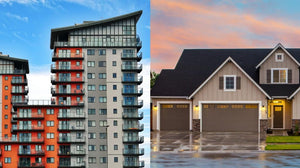How to Baby Proof Your Home in an Apartment vs. a House?
Sep 16, 2024
When it comes to baby-proofing, the safety of your little one is paramount. However, the approach to baby-proofing can differ significantly depending on whether you live in an apartment or a house. Each living environment presents unique challenges and opportunities for creating a secure space for your baby. In this blog, we’ll explore tailored advice for baby-proofing in both types of homes to ensure your baby is safe and your home is child-friendly.
Baby Proofing in an Apartment
**1. Focus on Compact Spaces
Apartments typically offer less space than houses, which means every inch needs to be optimized for safety. Start by focusing on common danger zones:
-
Sharp Corners: In a smaller space, sharp corners on furniture can be more of a concern. Use corner and edge guards to protect your baby from bumps.
-
Cabinet and Drawer Locks: Given the compact nature of apartments, it’s likely your cabinets and drawers are within easy reach. Install locks to keep harmful items out of your baby’s reach.
-
Electrical Outlets: Ensure all outlets are covered with childproof caps or outlet covers to prevent accidental shocks.
 Baby Proofing
Baby Proofing 

**2. Utilize Vertical Space
Apartments often have limited floor space but offer vertical space that can be used effectively:
-
Shelving Units: Secure bookshelves and other tall furniture to the wall to prevent tipping. Use anti-tip straps for added security.
-
High Storage: Keep cleaning supplies and other dangerous items in high cabinets or on shelves that are out of reach.
**3. Optimize Safety in Shared Areas
Shared or open-plan areas in apartments can be tricky:
-
Baby Gates: Use baby gates to create safe play areas or to block off access to places like the kitchen or bathroom.
-
Safe Play Zones: Create a designated play area using a playpen or soft play mat to give your baby a secure space to explore.
**4. Address Noise and Disturbances
In apartment living, noise can travel easily, which might disturb your baby’s sleep:
-
Sound Machines: Use a white noise machine to help mask external noises and promote better sleep.
Baby Proofing in a House
**1. Tackle Larger Spaces
Houses generally offer more space but can come with their own set of challenges:
-
Staircases: Install baby gates at the top and bottom of stairs to prevent falls. Choose gates that are sturdy and easy to open for adults but secure for children.
-
Large Furniture: Secure heavy furniture to the wall to prevent tipping, especially if it’s within your baby's reach.
**2. Manage Multiple Rooms
With more rooms, it’s important to baby-proof each area:
-
Room-by-Room Safety: Baby-proof each room by covering outlets, securing cabinets, and using corner protectors. Don’t forget to check any potential hazards like low furniture or exposed cords.
-
Door Locks: Consider using door locks or handles to keep rooms like the laundry or basement off-limits.
**3. Outdoor Safety
If your house includes a yard or outdoor space:
-
Fencing: Ensure that fences are secure and that gates have childproof locks to prevent your baby from wandering outside.
-
Outdoor Furniture: Baby-proof outdoor furniture by removing sharp edges or using protective covers.
**4. Fireplace and Heating
Houses with fireplaces and heating systems need special attention:
-
Fireplace Screens: Install a sturdy screen to prevent your baby from getting too close to the fireplace.
-
Heater Guards: Use guards around radiators or space heaters to protect your baby from burns.
General Tips for Both Apartments and Houses
**1. Childproofing Products
-
Safety First: Invest in high-quality baby-proofing products that meet safety standards.
-
Regular Checks: Periodically check and update baby proofing measures as your baby grows and becomes more mobile.
**2. Safe Cleaning Products
-
Out of Reach: Store all cleaning products and medications in high cabinets or locked drawers to prevent accidental ingestion.
**3. Create a Safe Environment
-
Play Areas: Regardless of the size of your home, create safe play areas with soft flooring and secure toys.
-
Emergency Preparedness: Have a plan for emergencies and ensure that your baby’s safety gear is easily accessible.



